It’s time to put aside your curiosity and discover the top 10 most delicious red fruits you can grow in your yard. But before we begin, know why growing these red fruits is necessary.
Studies say red fruits are a source of bioactive ingredients and nutrients such as vitamins A, C, and E and minerals such as calcium, phosphorous, iron, magnesium, potassium, sodium, manganese, and copper. Lycopene, and anthocyanins are the phytochemicals in red fruits, that gives them their vibrant red color.
Growing these crimson delights brightens your garden, yields a delectable harvest to satisfy your taste buds, and proves to be your most healthful choice. Discover their distinct tastes, growing preferences, health benefits, and other fascinating information in this article.
1. Rambutan
Rambutan has a bright red and hairy exterior with bright white flesh inside. They are golf-ball-sized and get their name from the Malay word for hair. Also known as the cousin of lychee, rambutans grow in clusters and are rich in vitamin C and antioxidants that keep the body healthy. There are many ways to eat them: add them to salads and desserts or have them raw because they are sweet and juicy. There are yellow, green, and other varieties of rambutan.
This tropical delight needs humid conditions, well-drained soil, and full sun to grow. Interestingly, in tropical areas of Southeast Asia, the trees fruit twice a year, while trees in Central America bear fruit for a single season.
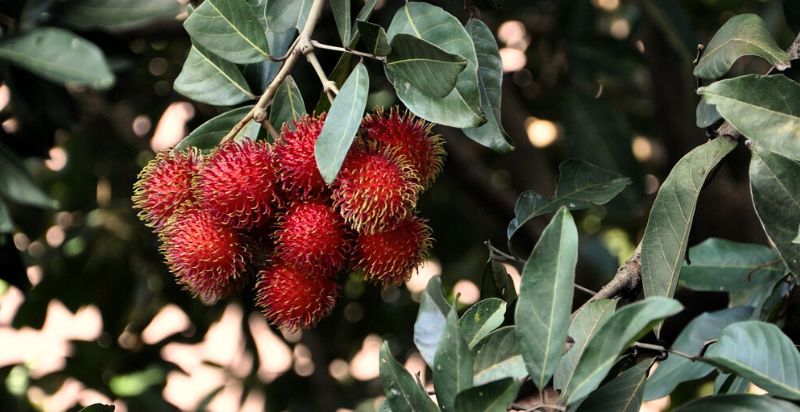
2. Red Apple
The fruit that keeps the doctor away tastes even better when it comes from your own garden. Apples are packed with dietary fiber, vitamin C, and antioxidants, and is the second largest sold fresh fruit in the Unitd States next only to berries.
Due to their beneficial nutrients, apples boost your digestive health and general well-being. They are available in various varieties, each with a distinct flavor profile. These round fruits make for a delicious snack and an ingredient in various dishes. It’s ideal for salads, pies, and drinks because of its crispy texture and sweet tartness.
There are many varieties- Shizuka, Kiku, Pink Lady, Fuji, Gala, Mountain Rose, and Wild Twist. If you wish to grow apple trees, choose a location with lots of sunlight and soil that drains properly. Apple trees thrive in regions with medium to high humidity, mild summer temperatures, and cold winters.
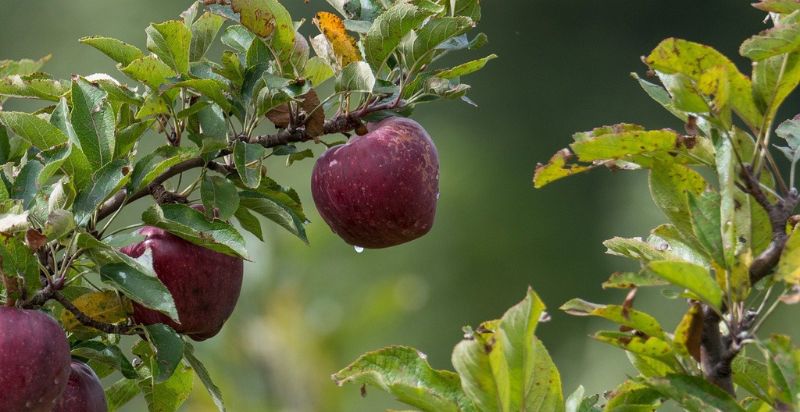
3. Strawberry
Strawberries are one of the most widely cultivated fruits. Their red and gold-flecked appearance characterizes them. It grows in the summer and is packed with essential compounds that our body needs, from fiber to antioxidants.
They are low in calories and find a place in salads, jams, and desserts. Also, this mouthwatering little fruit gem is a garden favorite that is easy to grow. Though they grow best in slightly acidic soil with lots of sunlight, strawberries grow in most regions and soil types in pots, beds, and containers.
Strawberries come in many kinds, including Alpine Yellow Wonder, Amaou, Earliglow, and Camarosa. Are you interested in reading more about strawberries? Please look at our strawberry growing and caring guides, articles on strawberry varieties, and many other informative blogs on gardening.
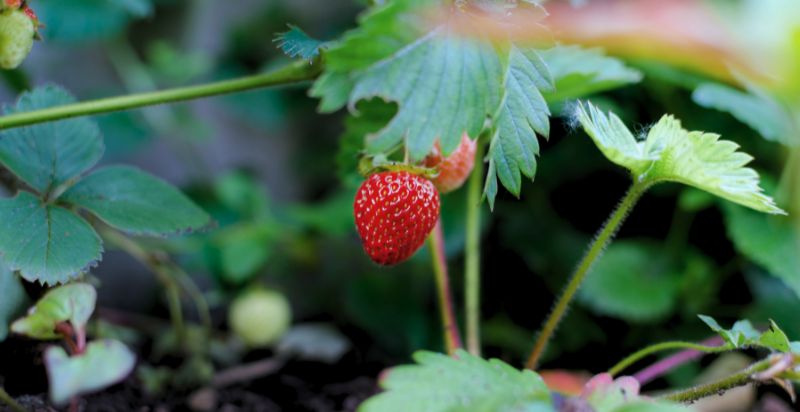
4. Raspberry
This gift of nature is plush, soft, and sweet-tart. You will enjoy raspberries in pies and jams because they’re juicy and sweet. A high potassium content and heart-healthy omega-3 fatty acids make them nutritionally valuable.
Here’s how it’s different from a blackberry: when you pick a blackberry, the stem stays with the fruit, while with raspberries, it remains on the plant. If you would like to add them to your garden, know that they thrive in various climates, though they are best adapted to the cool coastal climates of California.
Speaking of varieties, we have Nova, Jewel, Encore, and many more.
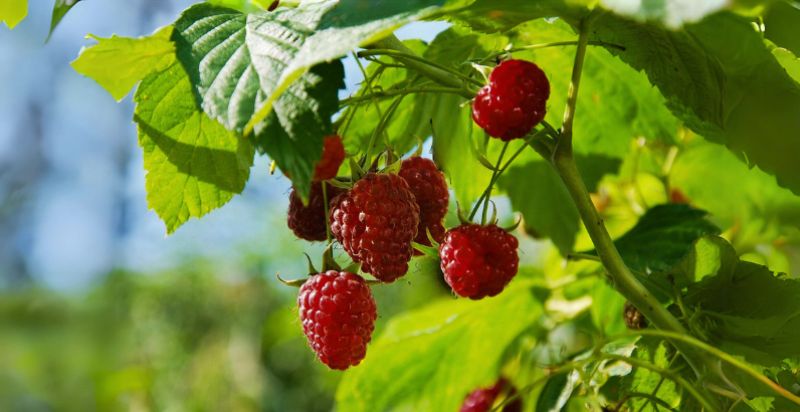
5. Red Currant
They may be tiny, but I bet you can call them a Ruby, for this exotic fruit shines like one in a jar. Red currants burst with a tangy flavor to liven your senses, offering goodness in bounty. Fiber, RSV (resveratol), folic acid, vitamins, and phenolics are also present in red currants (Ribes rubrum).
Their culinary uses vary depending on the region, from being used in processing milk, jam, and ice cream, to crafting special beverages and jellies with finesse. Have you heard of Lorraine Jelly and Johannisbeere Schorle? The former is a French preparation, and the latter is a German drink incorporating red currants’ tangy essence.
A native of Europe, red currants are cultivated and found in the wild. Let me assure you that it will make a wonderful addition to your garden, suited to grow in containers or in the ground. Red currants love the sun and a consistent water supply for their shallow roots. The most popular variety of red currant is the Red Lake Currant.
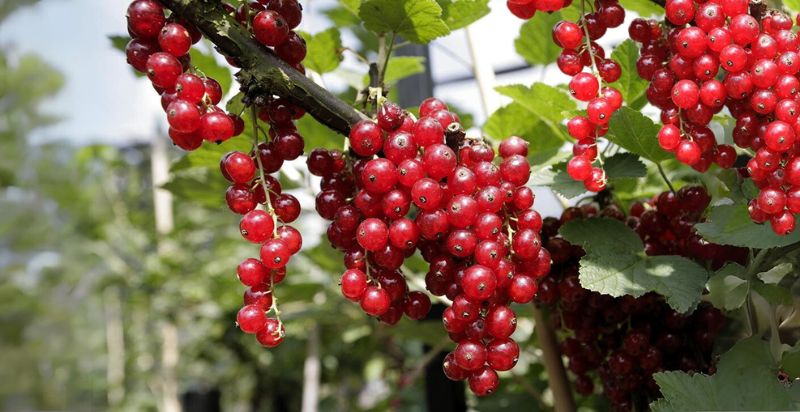
6. Cherries
Think of bursts of red in the green orchard. And how about stepping out in the garden and plucking juicy red cherries from your own tree? Cherry is one of the world’s most popular and beloved fruits for all the right reasons. They are an excellent source of vitamin C, potassium, and antioxidants; they taste sweet and tart.
Cherries grow well in cool climates with low humidity and are fast-growing trees compared to apples. The major cherry-producing states in the United States are Washington, California, and Oregon.
As for their origin, people think cherries originated in the Black and Caspian Seas region, though we do not have the evidence to prove it. The popular varieties are Bing, Sweetheart, and Montmorency, with Bing cherry being the most popular type grown in the United States.
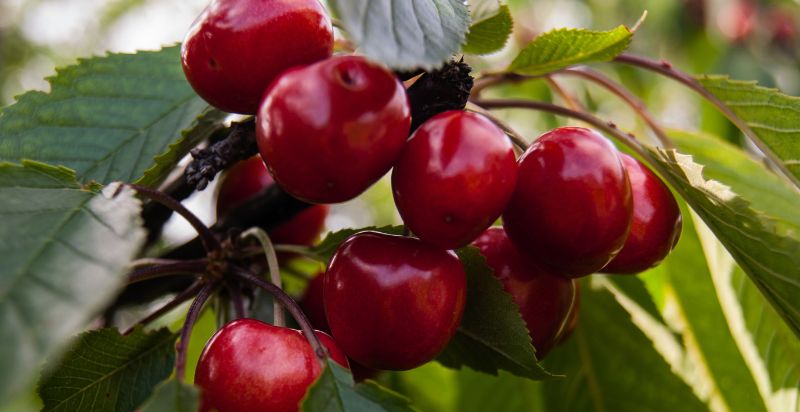
7. Cranberry
Cranberries are small and round berries that are bright red and slightly bitter. You can consume them as juice, dried fruit, or jams, and in America, you will see Ocean Spray cranberry sauce adorning the Thanksgiving table. They are rich in nutrients and antioxidants, grow well in cool temperatures, and soil rich in organic matter. Cranberries are grown throughout the northern part of the United States, with major production areas being Wisconsin, Oregon, and Massachusetts.
You can grow cranberries in your garden or pots. Hifhbush, Ben Lear, and Alfredo Compact are popular varieties.
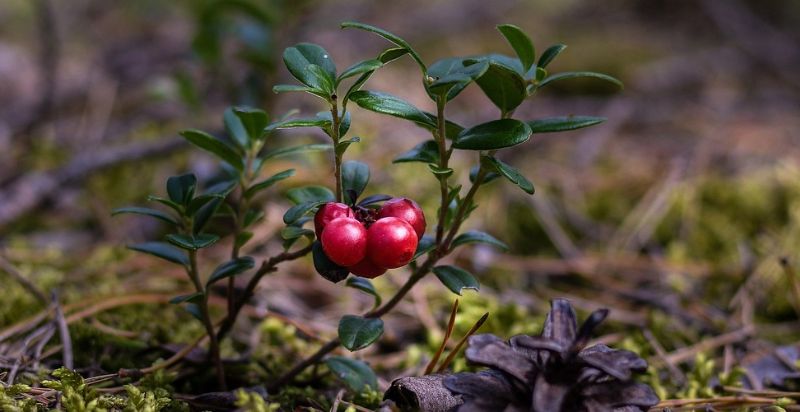
8. Red Plum
A member of the genus Prunus, red plums fall into six major categories: Japanese, American, Ornamental, Damson, Wild, and European. They contain anthocyanins and are a great source of dietary fiber, potassium, zinc, and vitamins C and A. Eat red plums in salads, yogurt, and granola. In taste, red plums are more sour-sweet than black plums.
Red plums are great summertime fruits grown all over the United States in areas where they receive 6-8 hours of direct sunlight. California produces 95% of the plums grown in the United States, growing over 250 varieties. The plum trees tolerate various soils but prefer well-drained sandy loam soil. You can see the trees bearing fruit when they are three to six years old.
Read about different varieties of plums, such as Ume, Shiro, June, Santa Rosa, and Elephant Heart, to discover their unique characteristics.
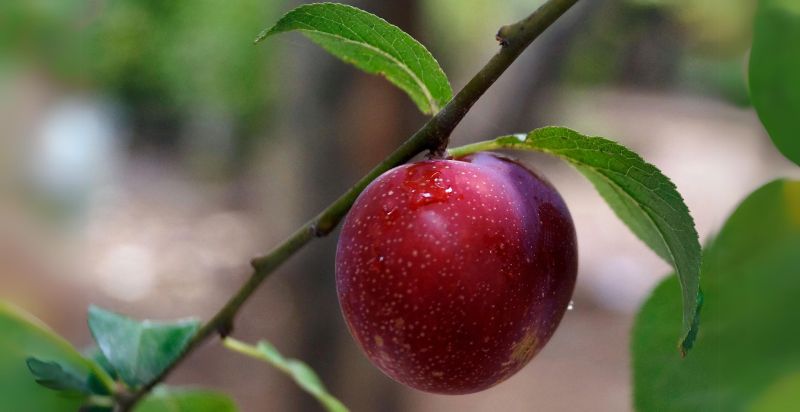
9. Pomegranate
These nutrition-packed red arils hail from the Mediterranean region and are a healthy choice for your garden. Pomegranates are so full of nutrients that they offer numerous health benefits. In taste, they are similar to cranberries- tart and slightly sweet. You can enjoy them fresh in juice or a variety of other dishes.
Pomegranate thrives in high temperatures and a dry atmosphere; hence, it is widely cultivated in Central Asia, tropical Africa, the Mediterranean Basin, and the Indian subcontinent. Ambrosia, Eversweet, and Tendrara are some varieties.
In the United States, California grows 99% of the pomegranates.
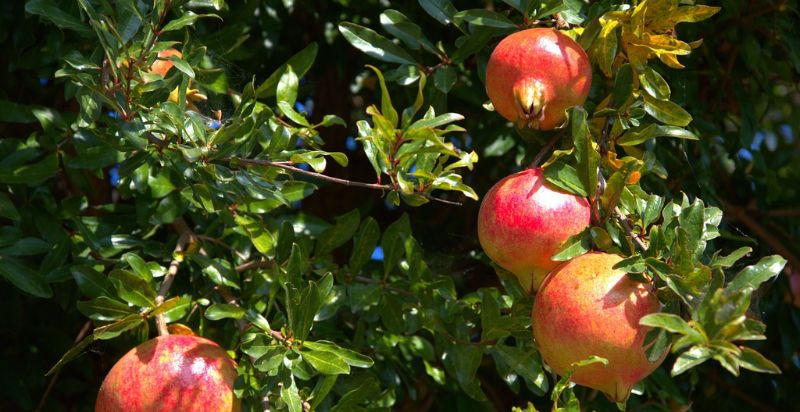
10. Tomatoes
Let’s technically call tomatoes fruits. Homegrown tomatoes are a thing for sun-ripened fruits; they are delicious and taste the best. You can puree or stew tomatoes and make them into soup, add to salads, sandwiches, and other dishes- endless possibilities.
Tomatoes are indigenous to the Andes Mountains in South America but are now grown in every continent on Earth (except Antarctica). They contain a wonderful nutrition profile with loads of vitamins and minerals. You will come across common varieties such as Tommy Toe tomatoes, Brandywine, Black Krim, Beefsteak, Abe Lincoln, Roma, Paul Robeson, and many more.
Tomatoes are easy to grow in home gardens with proper care and maintenance. You can grow many tomatoes in a small space, and they are relatively low-maintenance plants.
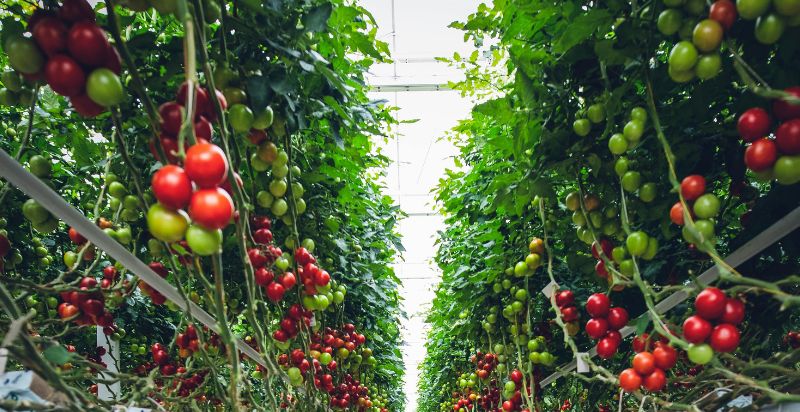
Conclusion
We have compiled this list of delicious red fruits based on their worldwide popularity. Grow these red fruits in your garden, pick them up from your own tree, and add red color to your plate while enjoying a delicious treat of nutrients. With a taste and nutrient composition, any of these red fruits will brighten your day and do wonders for your health. Remember to check out our website’s exclusive articles on exotic fruits and vegetables and unearth valuable gardening information!
- Lulo: Description, Flavor, Benefits, And Uses - March 19, 2024
- Banana Leaves: Benefits, Uses, Growing Tips & Cultural Information - March 11, 2024
- How to Grow Strawberries Successfully in Containers - March 8, 2024

2 thoughts on “10 Delicious Red Fruits to Grow in Your Garden”
Comments are closed.